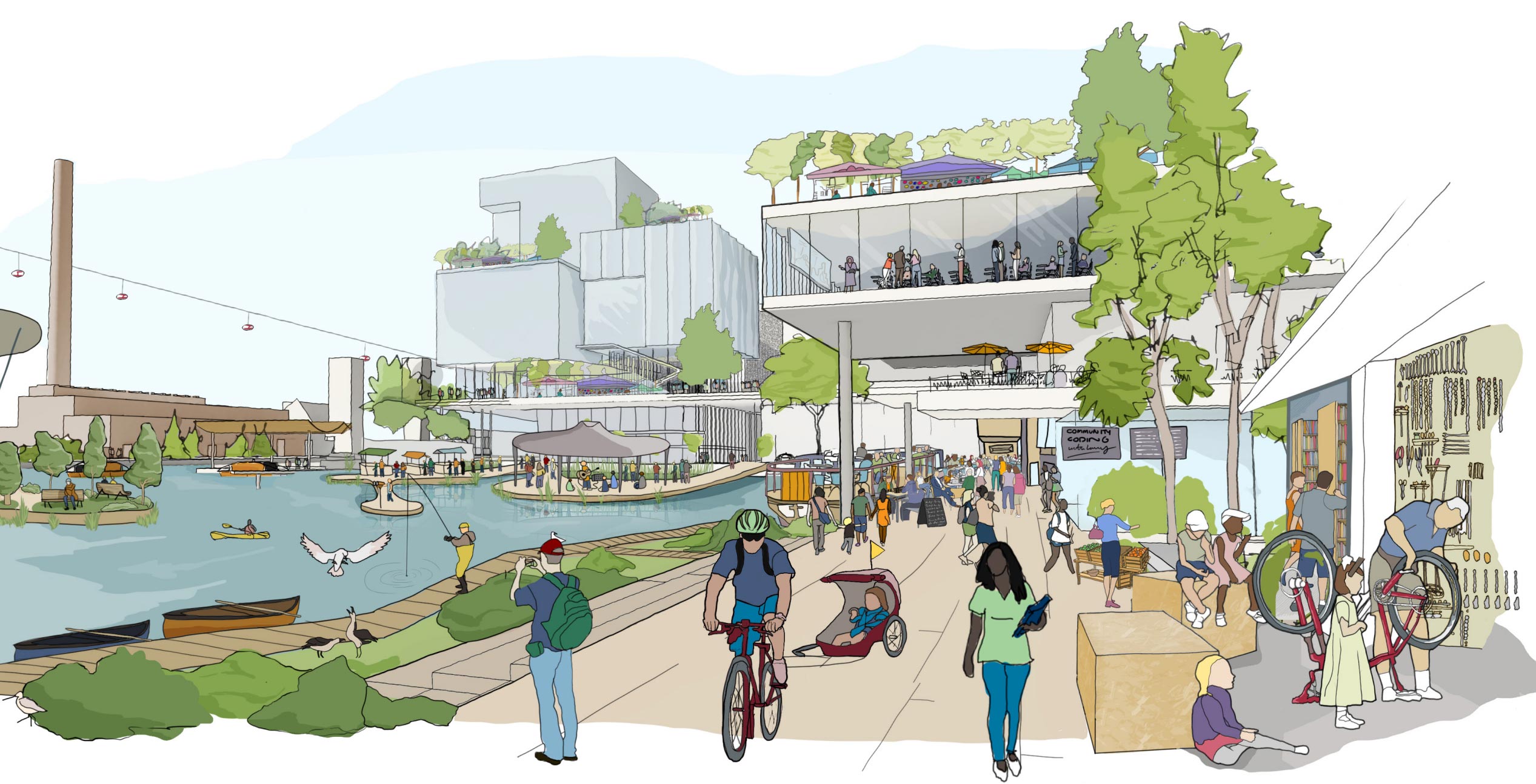
After kicking off work in New York City, Sidewalk Labs — Alphabet’s smart city enterprise — turned its attention to Toronto for its next major project.
In October 2017, Sidewalk Labs announced it would develop ‘Quayside,’ a 12-acre site on Toronto’s eastern waterfront, working alongside government partner Waterfront Toronto.
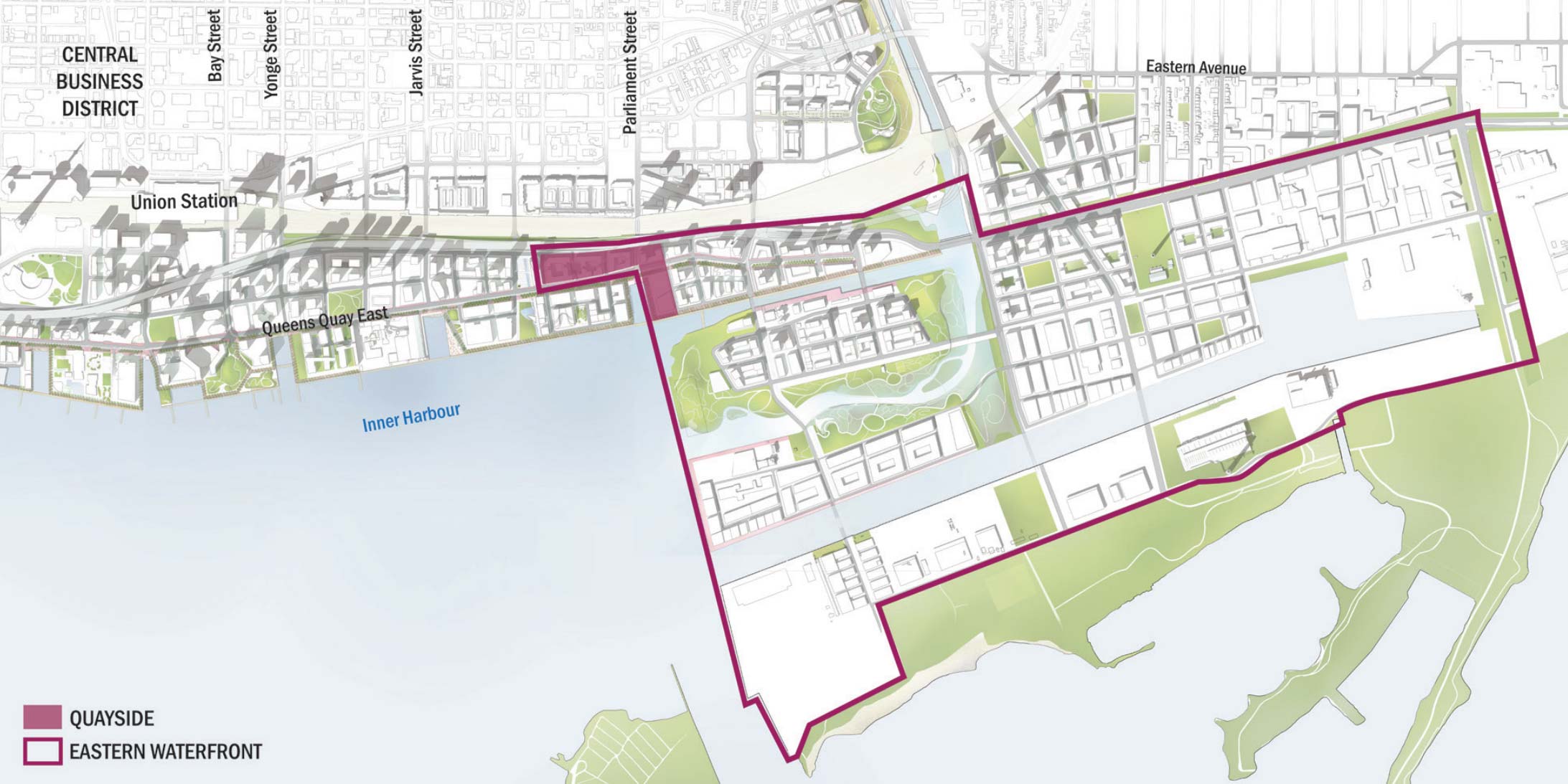
The rather desolate site gives Sidewalk Labs the opportunity to build the ideal urban neighbourhood from the ground up, with new technology, yes, but also applying certain technological ideas to urban design.
Rohit Aggarwala, head of urban systems at Sidewalk Labs, told me he thinks of the Quayside as a platform, and wants to make it future-proof through modularity and smart design that anticipates and makes space for the next big innovation.
He spoke with me over the phone from his office in New York City last week, ahead of today’s town hall listening session in Toronto. Below, find the highlights of our conversation.
Why Toronto is the perfect spot
“We genuinely looked all across North America and could not find a location and a city that we were more excited about than this one.
The site has the ability to plug directly into the vibrancy of the city and not be a sterile campus and be on the outskirts, which so many large developments have to do.
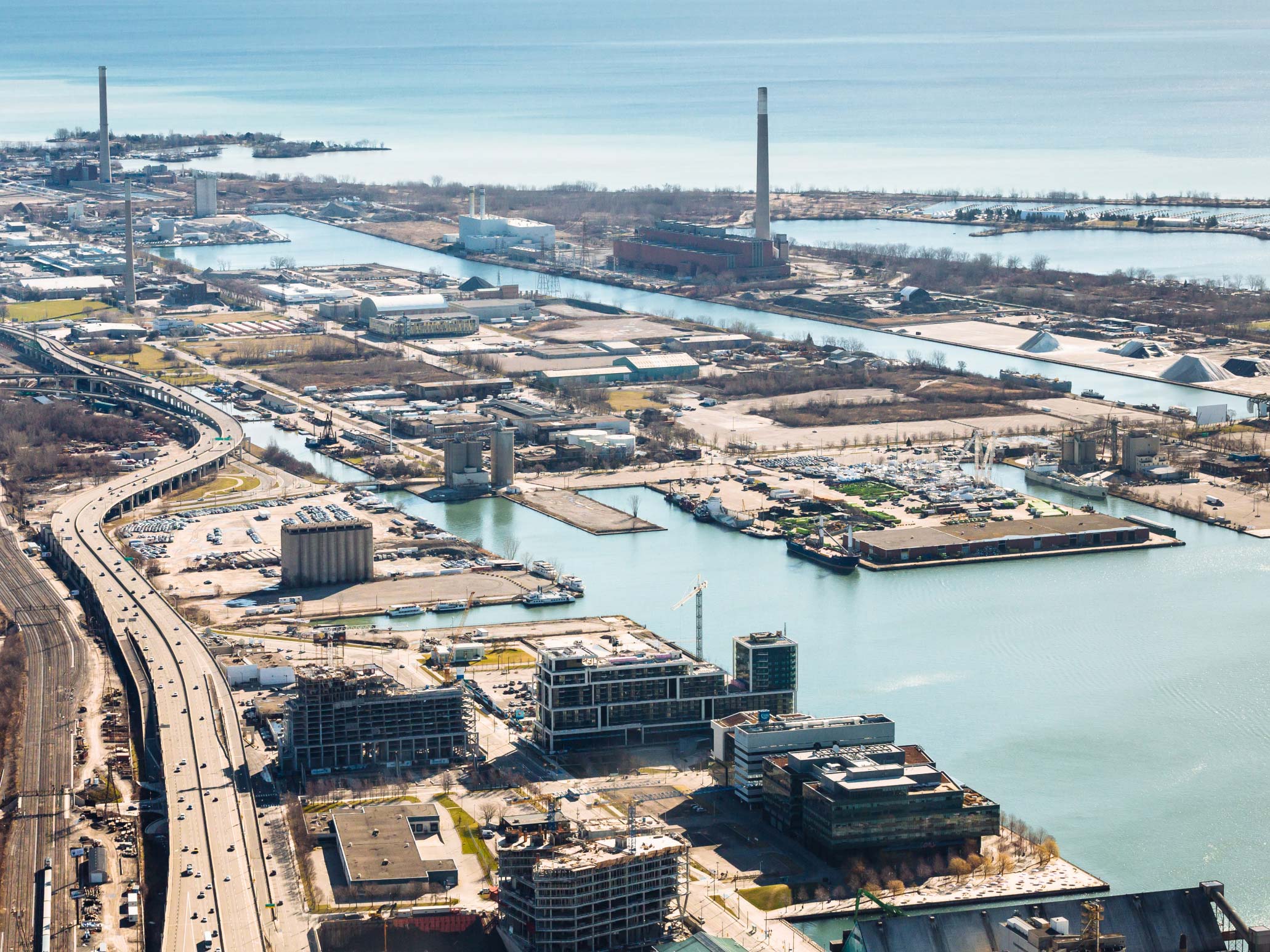
Toronto’s eastern waterfront. Photograph by Mark Wickens via Sidewalk Labs informational material.
What Sidewalks Lab started working on two-and-a-half years ago was the question of: what would you do if you were going to develop a neighbourhood and you had the flexibility to rethink the way the streets are, rethink the way the buildings are shaped, rethink how services are provided.
Knowing what we know and expect from technology over the next, say, ten or 20 years, what would you do differently? And that was really the starting point for our work at Sidewalk Labs.”
How autonomous cars allow for smart streets
“There’s an opportunity, particularly with self-driving vehicles, to completely redefine the the way streets work. An urban street today is primarily designed to facilitate vehicle travel and secondly to protect everything else from the damage that bad drivers are likely to cause.
We don’t need to design streets the same way if we can rely on cars that will always obey the speed limit, will always be paying attention, will be willing to slow down and yield in a reliable way, in ways that human drivers maybe do often and are supposed to do, but you can’t rely on that with your life. So that’s one example of something that could radically change. If you think about what you could do, relying on those cars.
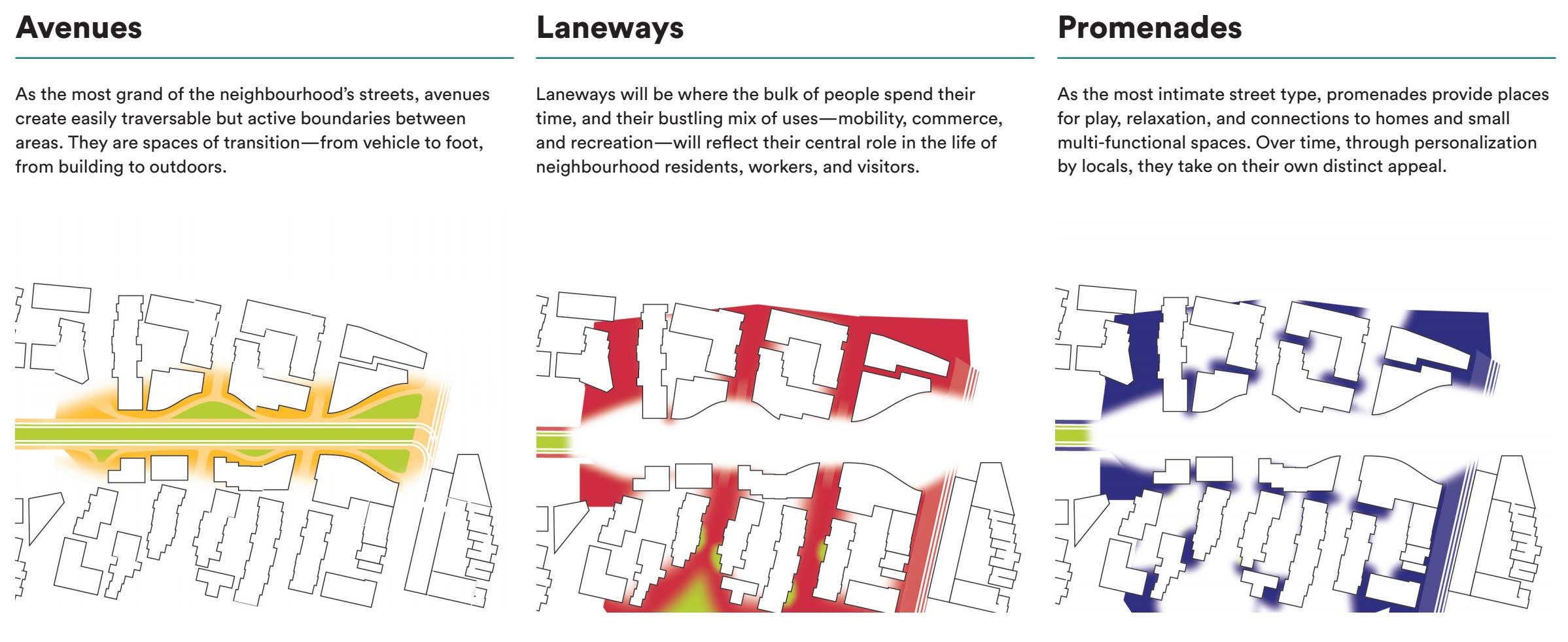
For example, you’d narrow the travel lane. Cars are generally speaking 8-feet wide, we have travel lanes that devote 12 feet to vehicles, because people aren’t good at staying in the middle of the lane and so we actually devote a lot of extra space to cars. If you shrink the lanes, that gives you more space for pedestrians.
You don’t need to provide parking, because either the car parks itself or what we hope is the car is a shared taxi-like experience.
All of a sudden, you have a much bigger expanse of space for pedestrians, for cyclists and the buildings can be spaced closer together which, everybody who studies cities understands that while you want some broad avenues and plazas, you also don’t want all your buildings to be far apart, because those expanses tend to be dead space more often than not.”
A self-driven waterfront
“We have proposed that the streets in Quayside, even across the eastern waterfront, be restricted to autonomous vehicles only.
“We […] could not find a location and a city that we were more excited about than this one.”
Inevitably there will be exceptions for emergency vehicles and if someone shows up with a traditional taxi cab who has a disability or something like that. But if you restrict almost all traditional vehicles from the streets it does allow you to do these kinds of redesigns and reap the benefits.”
Porting popular tech ideas over to building planning
“Buildings are designed with one purpose in mind and yet, the most exciting neighbourhoods in most cities are actually the places where the buildings have gone through two or three or four generations and where they started out as a warehouse and are now housing, or started out as housing and now it’s a work space. And yet, that’s rare because most of the time it makes more sense just to tear a building down rather than try to re-purpose it.
So one of the ideas that we’ve been working on is how could you design buildings at a reasonable cost — of course you could just overbuild it, but that’s not economically feasible — if you used thoughtful design and lightweight advanced materials and you think about all of your systems in a modular way, that’s one of the ideas we very much port over from technology.
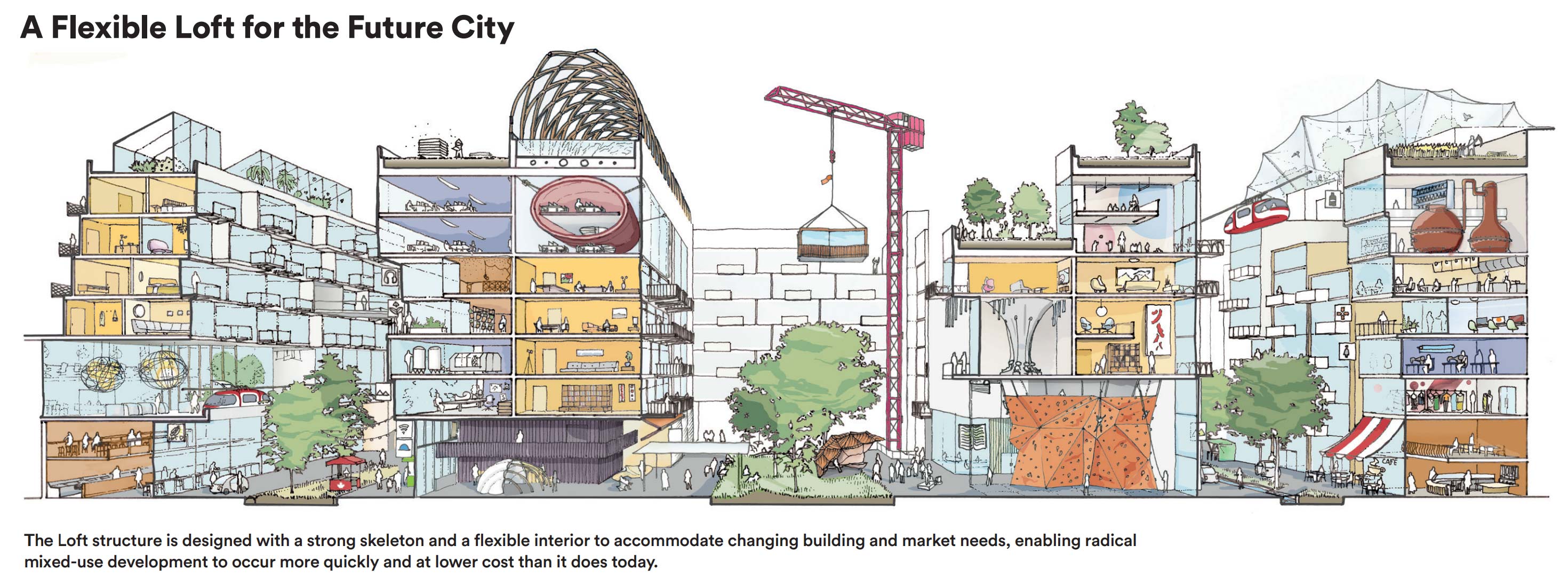
It’s not just the use of data, but also designing things that are platforms and modular and intended to evolve over time. You have the potential to make buildings that retain their value, that users can customize on an ongoing basis so it’s not a massive ordeal to decide you want to renovate your apartment or need to reconfigure your office space.
And in part that will also reduce the environmental footprint, because think about construction — every time you do a renovation of an interior space there’s a ton of stuff that you can’t reuse so that, at best becomes clean fill but more likely just landfill.”
Feedback from Torontonians
“Affordability was the top question that people [who attended the November 1st meeting] were concerned about. How is this going to create housing that normal people can access, not just super wealthy people? How is it not just an enclave for people who work for Google or Twitter or Amazon or whatever? It can’t be a tech enclave either. That was one big theme, another big theme was a concern around what happens to data. How are you going to address privacy needs.
A third concern was: how do you make sure it’s an inclusive, diverse community? Not just that it not be for the wealthy, but how do make sure that it reflects the vibrancy that really is one of the distinguishing features of Toronto, being such a multi-cultural city.”
Inclusion, diversity and affordability
“When Sidewalk Labs first started out one of the first things we put down was an objective was that, wherever we did this, whatever we wanted to build, it had to be inclusive. It’s gotta reflect the demographics of the metro area.
There are two things that we are particularly focused on as a way to make sure that that really happens.
One is a real commitment to making sure that the housing we build includes a large component that’s not only affordable to median and lower income people, but also has a diverse set of housing types and ownerships or rental opportunities that make housing accessible to lots of people.
“How do we make sure there are employment opportunities that are not just for people that know coding?”
You have some people that are priced out of the housing market just because it’s too expensive, you have others who are priced out because they might be able to afford a reasonable rent, but they don’t have the down-payment to buy.
The second aspect is how we think about everything else. How do we make sure there are employment opportunities that are not just for people that know coding? Or, it shouldn’t just be people who can do coding and people who can pour coffee. We need a good mix of jobs.
We need a place that feels comfortable to a wide variety of people, that means taking very seriously the idea that we want to redesign streets that are easy for people to use if they are senior citizens, places that are welcoming to children, places that are easy to navigate for the visually impaired. That goes to how we design the street-scapes for the public realm.”
Wireless connectivity
“The fundamental belief is that anything we do, not only would we want a level of ubiquitous connectivity, but one of the big ideas that I’m keen on is making sure we design an infrastructure that is easily upgradeable as technology changes.

Think about when 50 years ago we finally got most neighbourhoods in North America wired for electricity and telephone service, and then along comes cable television and all of these cities had to go through an effort to get cable television put everywhere. By the time we finished that, we realized, now we need fibre everywhere. So learning from that and thinking about this concept from so many electronics products — how do you make components swappable, how do you make it easy to upgrade.
Part of what we’re thinking about is how do you develop a utility system that when the next thing comes […] it can be put in at low-cost and without much construction because that’s the way we make it so a neighbourhood doesn’t start out smart and then get dumb as the rest of the world gets smarter, but it actually stays at the cutting edge.”
Correction: Rohit Aggarwala’s title was corrected to head of urban systems from co-head of Sidewalk Labs.
This interview has been edited for length and clarity.
All images courtesy of Sidewalk Labs.
MobileSyrup may earn a commission from purchases made via our links, which helps fund the journalism we provide free on our website. These links do not influence our editorial content. Support us here.


